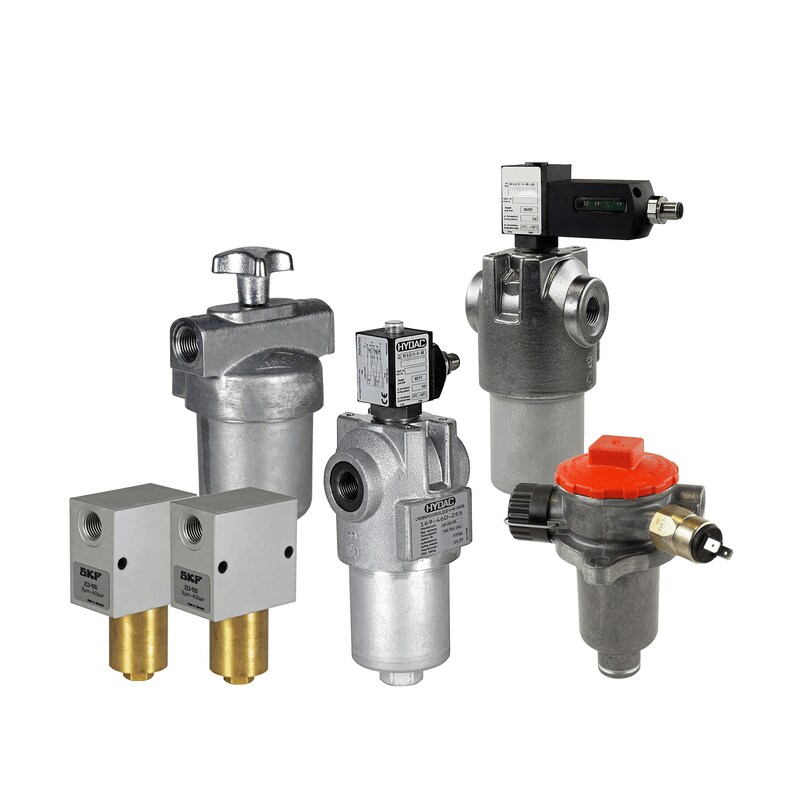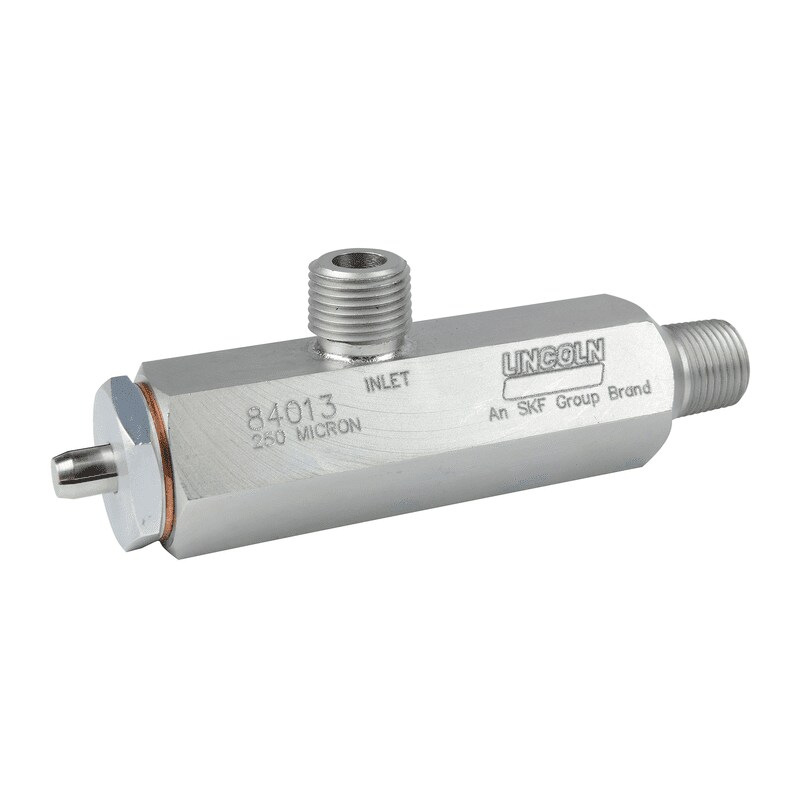Filters


Supplying friction points with contaminated lubricant results in shorter operating lives, premature failures and faster lubricant aging. Lubricants can be contaminated during the production process, or also later. Non-lubricants, oil-insoluble solid particles and the lubricant’s own aging products are all sources of contamination. Sufficient filtering considerably prolongs the service life of the machine, its bearings and other friction points.
The main selection criteria:
nominal flow [l/min], pressure drop (dependent on volume and viscosity)
operating pressure [MPa]
filter mesh size, filtration ratio, ACFTD capacity
temperature range
supplementary equipment such as: visual dirt indicator, electronic dirt indicator, bypass valves
materials for housings, seals, filter material
Filters used in centralized lubrication systems:
standard filters (according DIN 24550)
suction filters / strainers
pressure filters (in the main and by-pass flows)
reverse-flow filters
breather filters are used for reservoirs
screen filters
disk filters
When positioning filters on the reservoir or in the system, make sure that they are easily accessible and that filter elements can be easily exchanged. Tubing used in centralized lubrication systems should be cleaned (flushed) internally prior to assembly.
Technical features:
Compatibility with fluids: oil, greases up to NLGI grade 00
Ambient temperature: -30 to +100 °C
Pressure: up to 100 bar
Volumetric flow: 40 – 100 l
Special features:
Fiberglass fleece – inorganic fiber – absolute filtration
Wire fabric – stainless steel – nominal filtration
Related documents
Product brochure: 1-0116-EN
(530 KB)
Product brochure: Lincoln small grease reservoir filling filter
(111 KB)
Installation instructions Model 84013 and 84013A
(2.1 MB)
